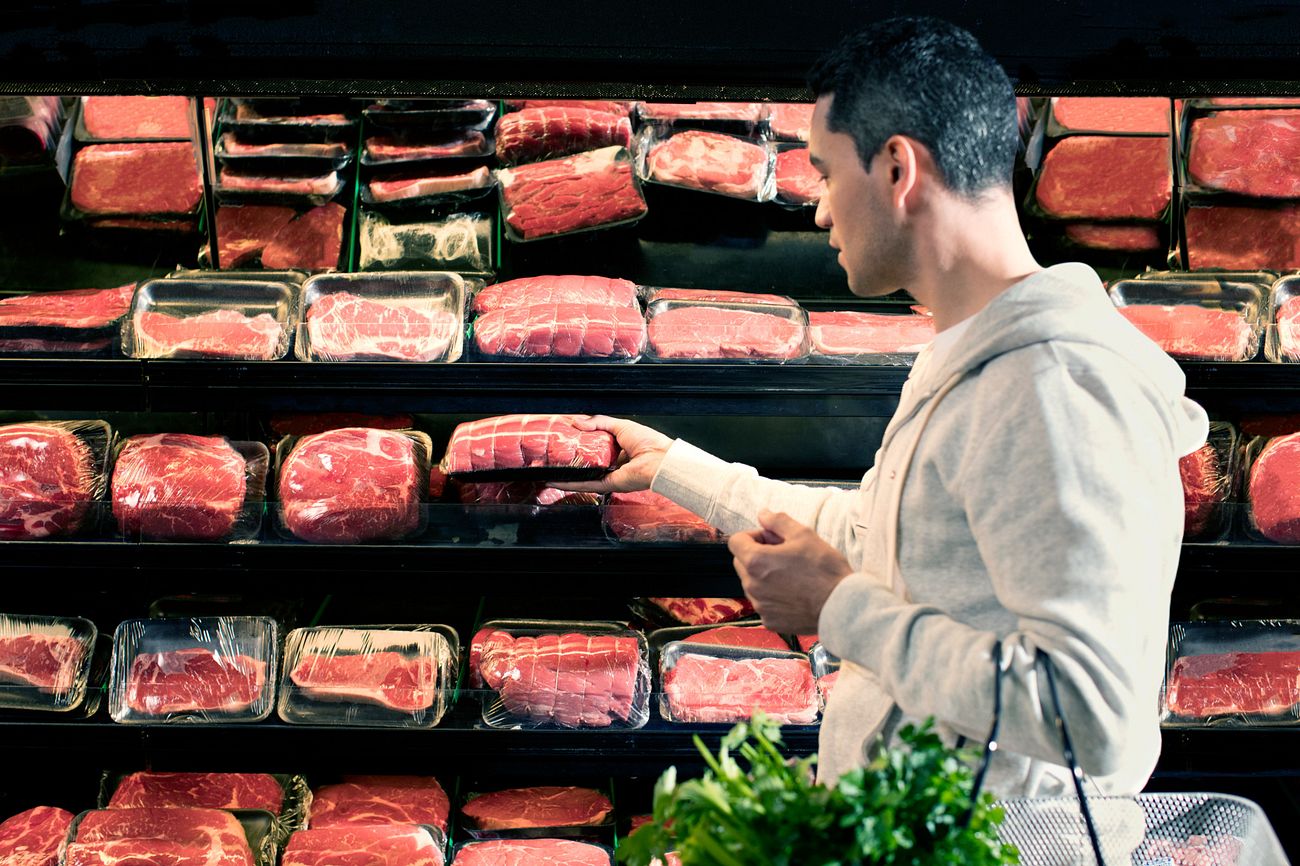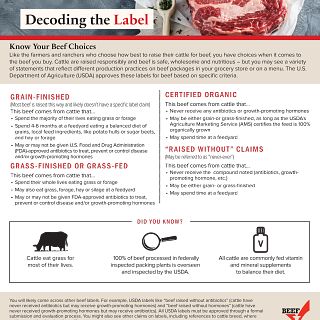Learn the Label
Grain-finished, Grass-Finished, Conventional, Natural, or Organic? Prime, Choice, or Select?
We know there is a witch's brew of labels when it comes to your beef choices. You need to know how to sort fact from fiction when it comes to providing a nutritious meal solution for your family.
Labeling Terms
Grain-Finished, Grass-Finished, Certified Organic, Naturally-Raised
Do you really know the difference between these labels? Are you sure? This guide will help you ask your meat manager, local farmer, or butcher the right questions to get the beef you want to feed your family.
Beef Grades
Beef grading sets the standards for the various quality levels of beef. The beef grading program uses highly trained specialists and sometimes grading instruments to determine the official quality grade. Beef quality grading is voluntary and administered by the USDA and paid for by beef packers.
The USDA employs federal inspectors to grade beef on expected palatability (tenderness, juiciness, and flavor). Quality Grades are evaluated on factors such as degree of marbling, and maturity of the animal. The grade is primarily determined by the degree of marbling — the small flecks of fat within the beef muscle. Marbling provides flavor, tenderness and juiciness to beef and improves overall palatability. Other grading factors include animal age, and color and texture of the muscle. While you may not know the maturity of the animal, there are some visual cues to help determine quality grades. Let's explore the most popular beef grades:
PRIME
Prime beef is produced from young, well-fed cattle. It has abundant marbling, is produced in smaller quantities than other grades, and is often sold in hotels and restaurants. Prime roasts and steaks are excellent for roasting, grilling or broiling.
CHOICE
Choice beef is high quality and produced in highest quantity, but has less marbling than Prime. Choice is the most popular grade of beef in grocery stores. Choice roasts and steaks, especially from the rib and loin, will be very tender, juicy and flavorful. They are suited for roasting, grilling and broiling. Less tender cuts are perfect for slow-cooking.
SELECT

So where does this leave you? In the grocery store, you'll see quality grades printed on the label. Prime is the top-tier for expected palatability, Choice is most common, and Select is the leanest option available in (some) groceries stores.
What if I am buying from a local source that doesn't have quality grade?
All beef in Virginia needs to be harvested in an inspected plant or facility. However, it may be state-inspected instead of federally-inspected. In this case, beef is inspected for quality and safety, but not for quality grade. You can use the guide above to help you make a purchasing decision.
Please also note, grass-finished beef tends to be leaner and it may be difficult to find grass-fed-and-finished beef that has moderate or abundant marbling. This will also affect the way you cook it for maximum flavor, so be sure to ask your source for recommendations.

